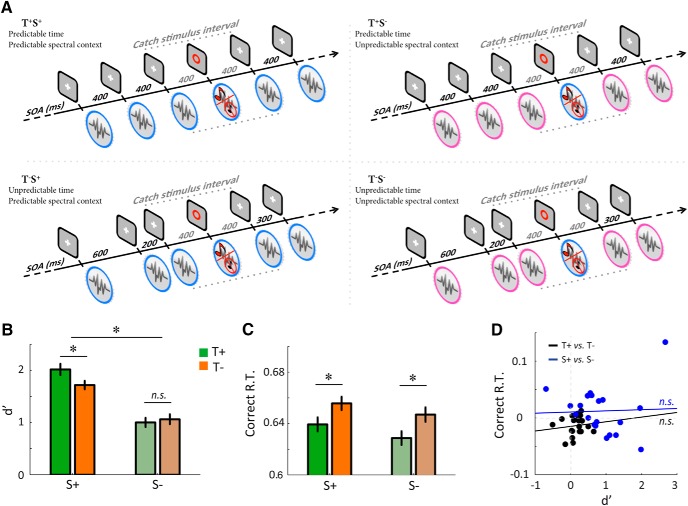Figure 2.
Experiment 2. A, Each trial consisted of a stream of simultaneous auditory and visual stimuli. Reference stimuli were composed of a (pink or blue) noise co-occurring with a white cross, while a red circle specified occasional target stimuli. On them, participants had to detect the possible occurrence (50%) of a pure tone embedded in the noise. To modulate temporal predictions, reference stimuli were either presented with a fixed or jittered SOA. To modulate spectral prediction, the (blue or pink) noises presented during reference and target stimuli were either similar or different. Notice that pre-target and post-target SOAs were kept constant across conditions. B, C, Average sensitivity (B, d′) and correct reaction times (C, Correct R.T., in seconds) as a function of temporal and spectral predictions. D, Pearson correlation across participants between the (main) effect of temporal (T+ vs T−)—or spectral (S+ vs S−)—predictability on d′ and on Correct R.T. Same conventions as Figure 1 (n = 20).

